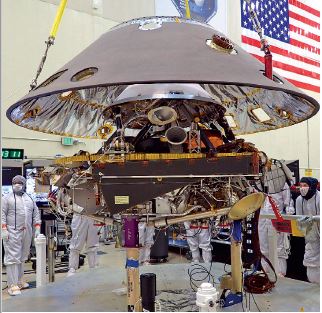U.S. Space Industry Employment
U.S. Space Industry Outlook
NASA Civil Servant Workforce, 2012-2022


NASA’s civil service workforce has grown gradually in recent years, contributing to an increase in U.S. space employment.
2019 TSRQ1 – Workforce: U.S. Space Workforce


The global space industry employs hundreds of thousands of highly-skilled individuals to design, produce, and operate cutting-edge technology. This workforce, in turn, contributes to thriving local economies, with clusters of innovative companies and service support industries. Understanding trends . . .
U.S. Space Industry Outlook
In December 2015, the U.S. Bureau of Labor Statistics released the 2016-17 Occupational Outlook Handbook (OOH). The OOH provides employment projections for the decade from 2014 to 2024. Among the 329 occupational profiles are four particularly applicable to the space industry: Aerospace Engineers, Aerospace Engineering and Operations Technicians, Astronomers, and Atmospheric and Space Scientists.
Workforce: Space Workforce – TSR 2015
2014 – U.S. Space Industry Outlook
Every two years, the U.S. Bureau of Labor Statistics develops employment projections based on expected developments in the labor force and economy, changes in demographics and technology, and a variety of other factors. In January 2014, BLS released the 2014–2015 Occupational Outlook Handbook, covering projections for the 2012–2022 decade.
2013 – U.S. Space Industry Outlook
The U.S. Bureau of Labor Statistics predicts that demand for many space-relevant occupations will grow from 2010 to 2020. Though encouraging, this does not necessarily translate to predicted growth within the space industry, as individuals in these occupations work in a wide variety of industries.
2012 – U.S. Space Industry Outlook
The U.S. BLS Employment Projections program develops information about the U.S. labor market 10 years in the future. The most recent projections provide estimates of growth in specific occupations from 2010 to 2020. The occupational titles used by BLS for employment projections are not the same as the NAICS codes used by BLS in its Quarterly Census of Wages and Employment, discussed above.
2012 – Industry Outlook
2011 – U.S. Space Workforce – Snapshot
The ongoing impacts of the economic slowdown and the reductions in NASA’s contractor workforce are not the only issues affecting U.S. space industry employees. The American aerospace workforce is aging. As shown in Exhibit 4k, the ages of both the NASA workforce and the broader aerospace workforce are clustered in the 40- to 60-year age range.
2009 – U.S. Space Industry Outlook – Snapshot
The most authoritative source of U.S. space industry workforce data is the Bureau of Labor Statistics. U.S. space industry core employment is measured by assessing the six BLS North American Industry Classification System (NAICS) codes detailed in Exhibit 4b. While NAICS codes reflect an official U.S. government approach to understanding and measuring employees and salaries, in some cases NAICS codes combine workers from different industry sectors under the same labor category, complicating an exact labor count.